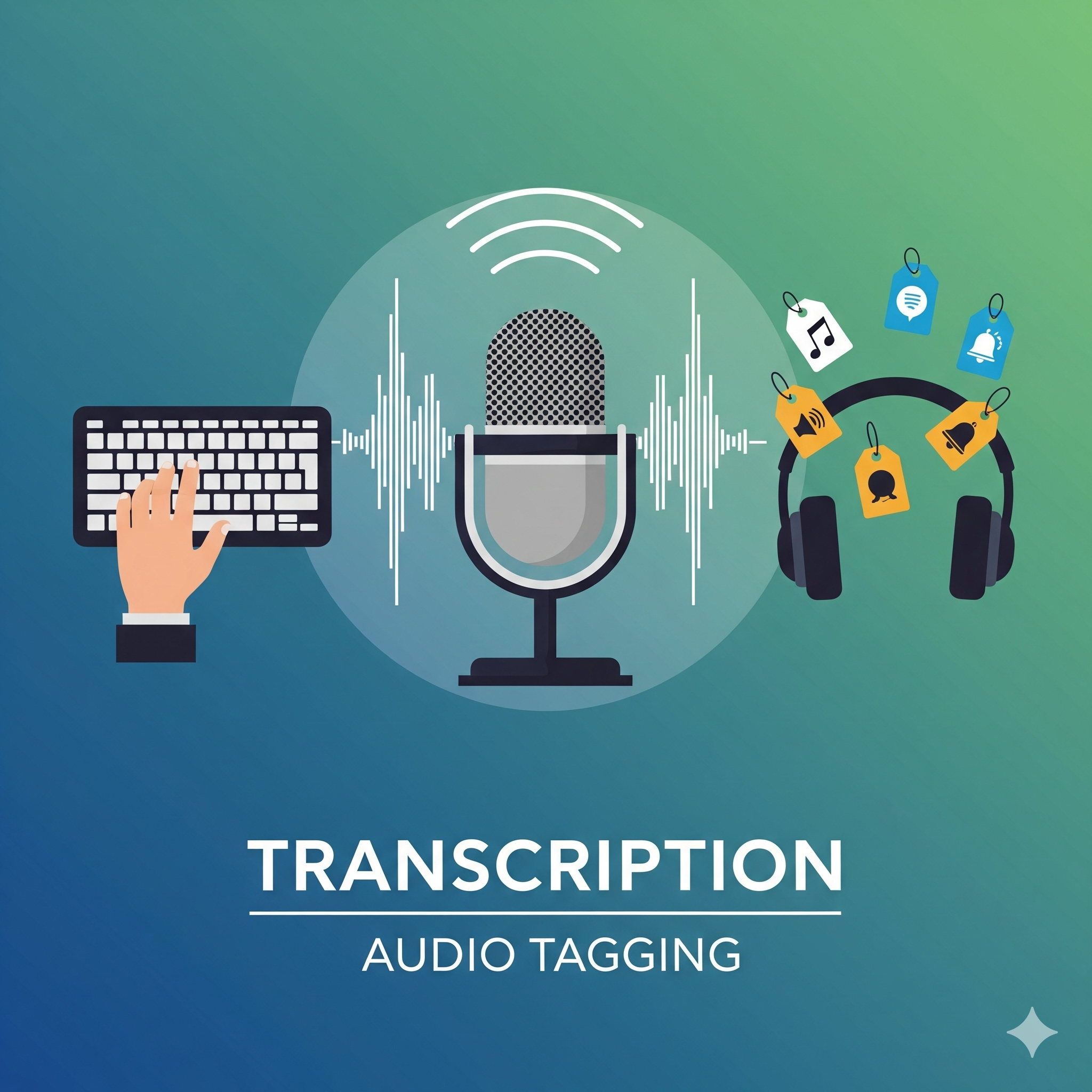What is a Transcription & Audio Tagging Specialist?
A Transcription & Audio Tagging Specialist is a professional who converts spoken words from audio or video files into accurate, written text. In the context of artificial intelligence, their role extends beyond simple transcription to include tagging—adding descriptive metadata to the audio. This involves identifying and labeling specific sounds (e.g., laughter, applause, music, or sirens), as well as marking speaker changes, timestamps, and other contextual information. This meticulous work provides the essential, structured data needed to train and improve AI models for speech recognition, voice assistants, and sound event detection.
Key Responsibilities
The day-to-day tasks of a Transcription & Audio Tagging Specialist are highly detail-oriented and require focused concentration. Responsibilities include:
- Accurate Transcription: Listening to audio and video recordings and transcribing all spoken words with a high degree of accuracy, adhering to specific style guides and formatting rules.
- Audio Tagging: Labeling and categorizing non-speech sounds that occur in the audio. For example, identifying sound events like a dog barking, a phone ringing, or a car horn.
- Speaker Diarization: Accurately identifying and timestamping when different speakers are talking, which is crucial for training AI to differentiate voices.
- Quality Assurance: Reviewing and editing transcripts and tags created by other team members or by automated speech-to-text software to ensure the highest level of accuracy and consistency.
- Handling Diverse Audio: Working with a wide range of audio qualities, accents, dialects, and multiple speakers in a single recording.
- Following Guidelines: Strictly adhering to complex and extensive project guidelines to maintain uniformity and quality across large datasets.
Essential Skills and Qualifications
A successful Transcription & Audio Tagging Specialist combines excellent technical abilities with crucial soft skills.
Hard Skills
- Exceptional Listening Skills: The ability to discern spoken words and sound events, even in poor-quality audio with background noise.
- Fast and Accurate Typing: High-speed typing is essential for efficiency, typically with a minimum of 60 words per minute.
- Strong Grammar and Spelling: A superior command of the language, including grammar, punctuation, and spelling, to ensure a polished final product.
- Technical Proficiency: Familiarity with transcription software, audio playback tools (like foot pedals), and web-based annotation platforms.
Soft Skills
- Meticulous Attention to Detail: Errors in transcription or tagging can significantly impact an AI model's performance, making precision the most critical skill.
- Patience and Focus: The work can be repetitive and requires the ability to concentrate for long periods of time without losing accuracy.
- Problem-Solving: The capacity to handle challenging audio, such as cross-talk or mumbled speech, and find logical solutions to ambiguous situations.
- Adaptability: The ability to quickly learn new software, guidelines, and project requirements as they change.
The Role's Importance in AI
Transcription & Audio Tagging Specialists are the human backbone of the AI models that listen and understand the world. Their work directly enables the development of:
- Voice Assistants: Allowing devices like Siri, Alexa, and Google Assistant to accurately understand and respond to spoken commands.
- Call Center Automation: Training AI to analyze call recordings for sentiment, keywords, and customer issues.
- Subtitling and Accessibility: Creating accurate captions for videos, making content accessible to a wider audience.
- Autonomous Vehicle Technology: Labeling sound events (like sirens or horns) to help self-driving cars perceive their environment.
Career Path and Outlook
The role is often flexible, with many positions being remote or freelance, making it an excellent entry point into the tech industry. With experience, a specialist can advance to:
- Quality Assurance (QA) Analyst: Focused on reviewing the work of other annotators to ensure quality and consistency.
- Project Lead: Managing a team of transcriptionists and overseeing project deadlines and guidelines.
- Data Manager: A role that focuses on the overall organization and management of data for AI development.
The demand for these skills is expected to grow as AI-powered applications that rely on audio and voice continue to expand into new industries.
Tips for Getting Started
- Improve Your Skills: Practice your typing and listening skills on free online platforms.
- Get Certified (Optional): While not always required, certifications in general or specialized transcription (e.g., legal or medical) can set you apart.
- Look for Platforms: Many companies that hire for this role use third-party platforms for their projects.
- Build a Portfolio: Showcase a sample of your work to demonstrate your skills and accuracy to potential employers.
Potential Challenges
- Repetitive Work: The core task of transcribing can become monotonous.
- Poor Audio Quality: Dealing with low-quality recordings can be frustrating and time-consuming.
- Uncertain Workload: As a project-based role, the amount of work can fluctuate.
Despite these challenges, a career in Transcription & Audio Tagging offers a valuable opportunity to apply linguistic and analytical skills in a dynamic and growing field, providing a vital contribution to the next generation of AI technology.
